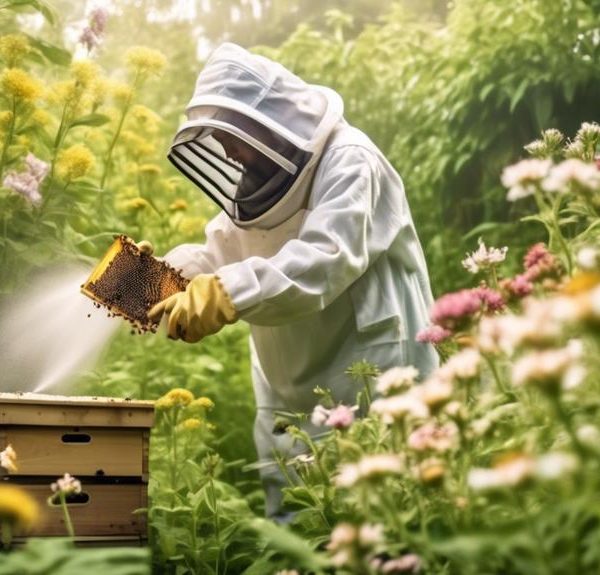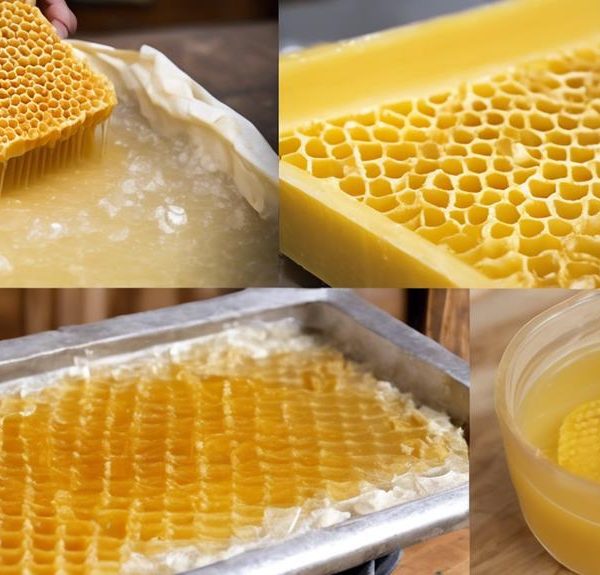Nestled in nature's rhythm, do bees make honey year round? Uncover the surprising truth behind this sticky, sweet enigma.
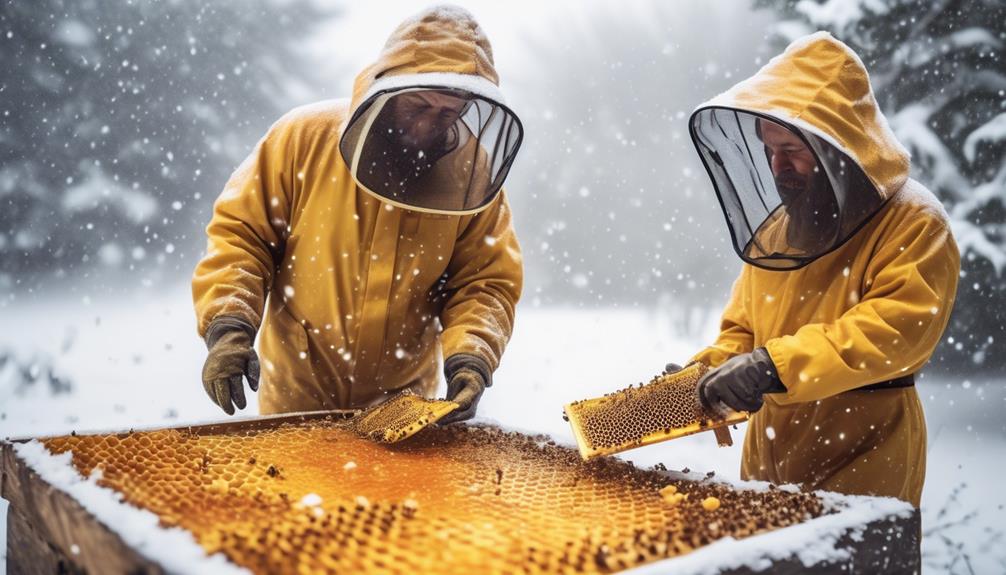
Do Bees Make Honey Year Round?
Bustling bees buzzing around their hive is a common sight during the warm summer months. But have you ever wondered if these industrious insects continue to produce honey when the weather turns colder? It's a question that has puzzled many, and the answer isn't as straightforward as you might think. Several factors play a role in the honey-making process, including the bees' behavior, the availability of nectar, and most importantly, the seasons.
Are you prepared to uncover the sweet (and not-so-sweet) truth about your favorite natural sweetener? Stay with us as we unravel this fascinating honeyed mystery.
Key Takeaways
- Bees are seasonal creatures and collect nectar from blooming flowers during warm months.
- Honey serves as a food source for bees during colder months, and they rely on stored honey until spring.
- Spring and summer are peak honey-making periods, while fall and winter see a significant decline in honey production.
- Environmental conditions, such as climate and extreme weather, can impact nectar availability and honey yield.
Understanding Bee Behavior
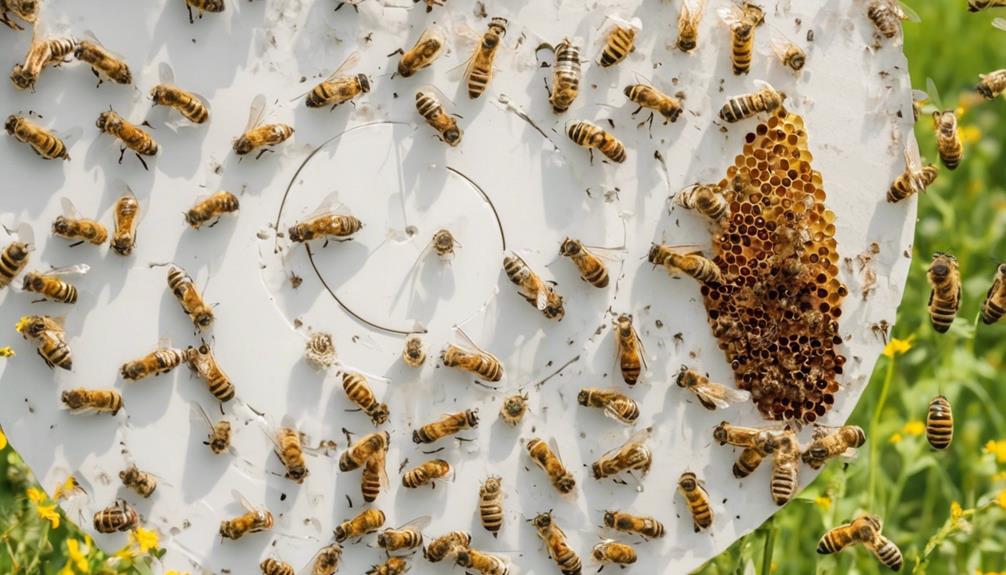
To truly grasp why bees don't produce honey year-round, you'll need to delve into the intricacies of bee behavior, a complex dance of survival, adaptation, and instinct. Bees, like many insects, are seasonal creatures. During the warm spring and summer months, bees are hard at work collecting nectar from blooming flowers, which they convert into honey. This honey serves as a food source for the colony during the colder months, when flowers are scarce and bees can't forage.
However, the honey production process isn't as simple as it seems. Bees must also contend with various environmental factors. In winter, for instance, bees cluster together in their hive to conserve heat, slowing down their metabolism and reducing the need for food. This is why they don't produce honey during this period; they're essentially in survival mode, relying on their stored honey to get them through until spring.
Understanding this cycle is crucial to comprehending why bees don't produce honey year-round. It's not because they can't, but because their survival strategy, honed by millions of years of evolution, doesn't require it.
The Honey-Making Process
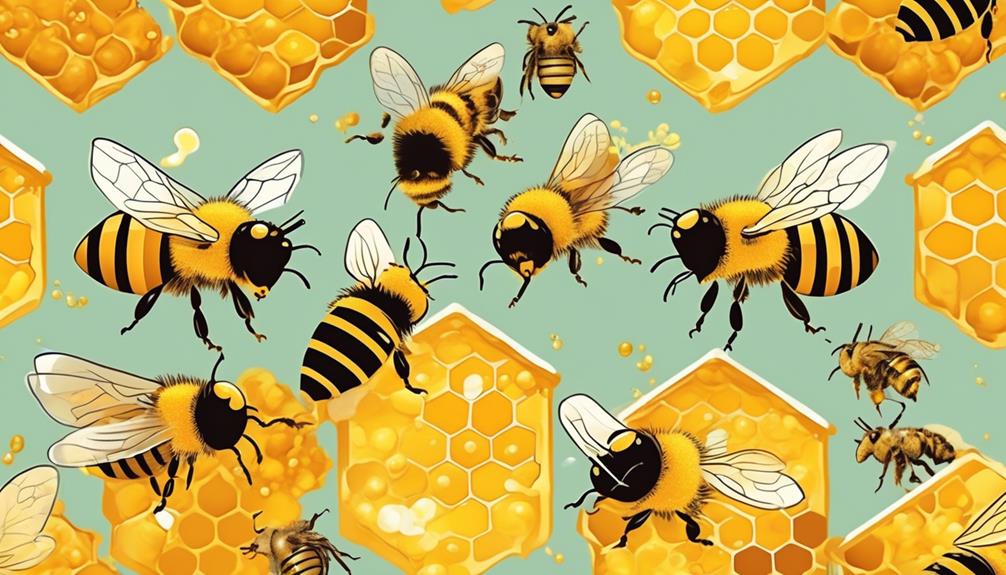
Let's dive into the honey-making process, a fascinating sequence of actions that bees undertake to turn nectar into the sweet, golden substance we know and love. After foraging, bees store nectar in their honey stomach, where enzymes begin to break down complex sugars into simpler ones. Back at the hive, this partially digested nectar is then passed from bee to bee, further breaking down the sugars and adding additional enzymes.
Once deposited into a honeycomb cell, bees fan their wings to evaporate excess water, concentrating the nectar into thick, sticky honey. They then cap the cell with beeswax, allowing the honey to mature over time. This process, known as 'ripening,' can take up to a week.
During colder months, bees consume their stored honey for energy. Interestingly, they produce just enough extra to sustain during times when nectar is scarce. This efficient and delicate honey-making process is integral to the survival of the entire colony and is a remarkable display of nature's ingenuity.
Understanding it gives insight into the year-round activities of these hard-working and essential creatures.
Factors Influencing Honey Production
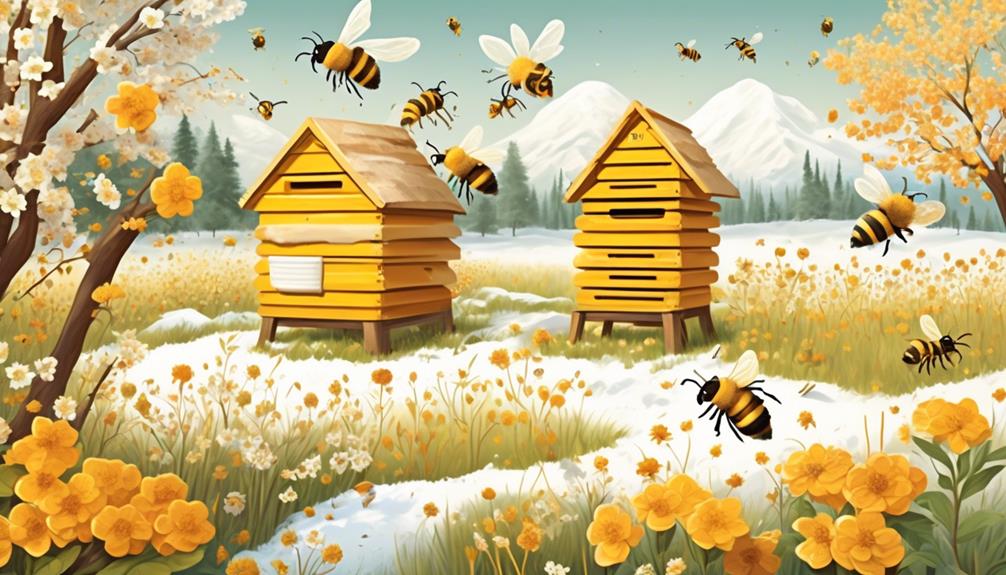
Several factors significantly impact the quantity and quality of honey produced: the species of bee, climate, available flora, and overall health of the hive.
Not all bees are honey producers. For instance, you'll find that only the Apis species, commonly known as honey bees, produce honey we can harvest.
Climate plays a crucial role too. Bees need a temperate environment to thrive, but extreme weather conditions can disrupt their nectar collection and honey production. If it's too cold, bees can't fly out to collect nectar. On the other hand, extreme heat can lead to hive overheating, impacting the bees' health and consequently, their honey production.
The type of plants available for nectar collection can also affect honey quality. Different plants produce different nectars, leading to honey with diverse flavors and colors. A bee's diet of diverse flora ensures high-quality honey.
Lastly, the health of the hive is paramount. Diseases, parasites, and pests can severely affect a hive's productivity. The bees' ability to fight these threats depends on their health, directly influencing the honey's quantity and quality.
Seasonal Variations in Honey-Making

In understanding the complex world of beekeeping, it's vital to note that honey-making among bees isn't a constant process but varies dramatically with the seasons.
During spring and summer, when flowers are in full bloom, bees are at their most active. They collect nectar from a wide range of blossoming plants, which they convert into honey in the hive. This is their peak honey-making period, making it an ideal time for beekeepers to harvest honey.
However, come fall and winter, you'll see a significant drop in honey production. The decline in temperature means fewer flowers are available for bees to forage from. Consequently, the bees enter a sort of conservation mode. They focus on consuming the honey they've stored instead of producing more, enabling them to survive the colder months.
It's also important to realize that environmental conditions, like rainfall and temperature, can influence these seasonal variations. For instance, a warm winter or a rainy summer can disrupt the usual honey-making cycle.
Understanding these seasonal variations is key to effective beekeeping. It helps you anticipate and plan for honey production fluctuations, ensuring a successful harvest each year.
Impacts of Climate on Honey Yield

Building on what we've learned about seasonal fluctuations in honey production, it's crucial to delve deeper into the role climate plays in honey yield. You see, a region's climate directly impacts the blooming periods of plants, which in turn determines nectar availability for bees.
In temperate climates, bees generally make honey in the spring and summer when flowers are abundant. However, in winter, flowers are scarce, and bees live off stored honey. In contrast, in tropical climates, where flowers bloom all year round, bees can make honey throughout the year.
You must understand that extreme weather conditions, such as droughts or floods, can dramatically reduce nectar production in plants, leading to lower honey yield. Unexpected weather changes can also disrupt bees' foraging activities.
Moreover, global warming has serious implications for honey production. Rising temperatures can shift the timing of flower blooming, leading to a mismatch between flower availability and bees' active periods. This can result in reduced honey yield.
Frequently Asked Questions
What Kind of Flowers Do Bees Prefer for Making Honey?
You're curious about what kind of flowers bees prefer for making honey, right?
Bees aren't picky, they'll buzz around any flowers available. However, they do have favorites.
They're drawn more to blue, purple, and yellow flowers. Also, they love flowers with a sweet, strong scent and a flat or shallow blossom. Plants like lavender, sunflowers, and roses are top picks.
How Does the Taste of Honey Change Depending on the Flower Source?
Yes, the taste of honey does change depending on the flower source.
You'll find that honey made from clover has a mild, sweet, floral flavor, while honey from buckwheat has a robust, dark, and malty taste.
Orange blossom honey, on the other hand, carries a hint of citrus.
The nectar source significantly influences the taste, color, and aroma of the honey you're enjoying.
How Does the Bee Population Affect the Quantity of Honey Produced?
The size of your bee population directly impacts honey production. More bees means more workers collecting nectar and transforming it into honey.
However, it's not just about quantity. A diverse, healthy bee population also ensures a steady, efficient honey production. If the bee population dwindles or isn't diverse enough, you'll likely see a decrease in honey output.
What Are the Health Benefits of Honey Consumption?
You're probably aware that honey, a natural sweetener, has numerous health benefits.
It's packed with antioxidants that boost your immune system and fight off diseases.
Daily consumption can help control your cholesterol levels, improve your heart health, and even aid in weight loss.
It's a natural energy booster, and it can soothe a sore throat or cough.
It also has antibacterial properties that can speed up wound healing.
Are There Any Potential Risks or Dangers to Bees During the Honey-Making Process?
Yes, there are risks to bees during honey production. They can become exhausted, particularly if they're overworked. Pesticide exposure is another danger, as it can contaminate the honey and harm the bees. Disease and parasites also pose threats.
It's important for you to know that responsible beekeeping practices can mitigate these risks, ensuring a healthy bee population. So, honey isn't just sweet, it's a product of hardworking bees that need our protection.
Conclusion
In essence, bees don't produce honey year-round due to seasonal variations and climate impacts. Their behavior, nectar availability, and weather conditions dictate honey production.
Cold seasons deter bees from venturing out, limiting nectar collection. Likewise, harsh climates can reduce the plants available for nectar. So, while bees are remarkable honey-makers, their production isn't constant.
It's a complex process influenced by numerous factors, making each honey yield unique and special.

